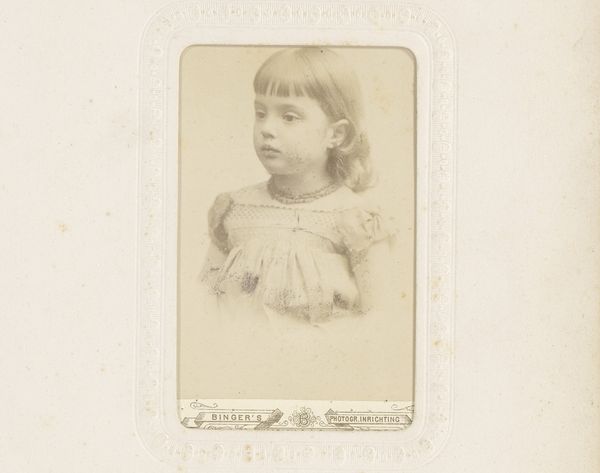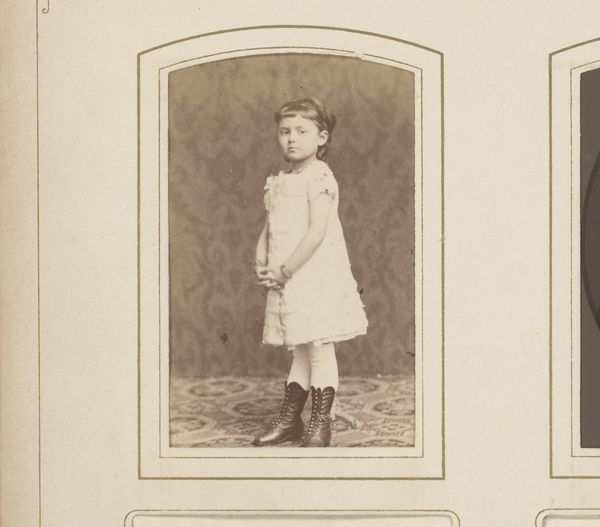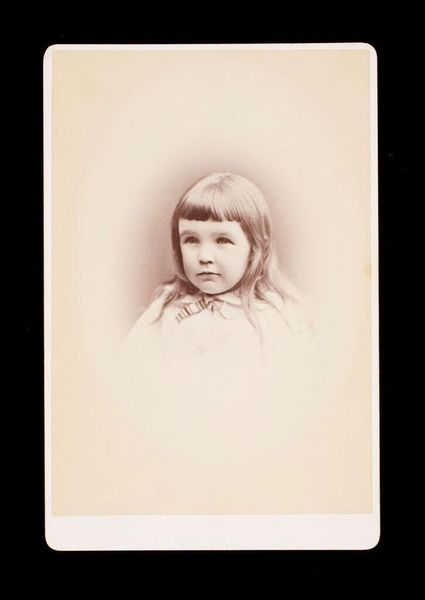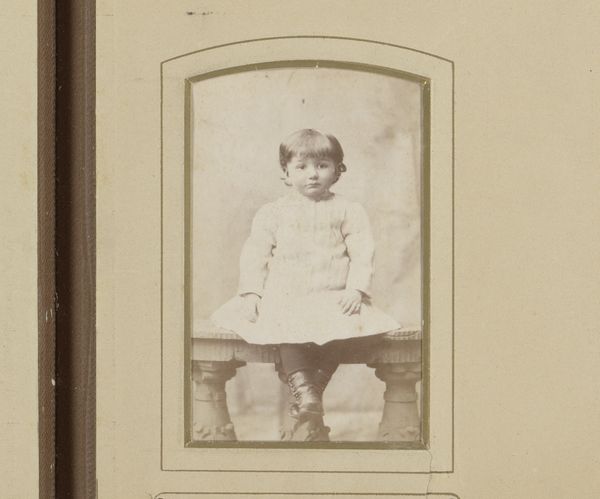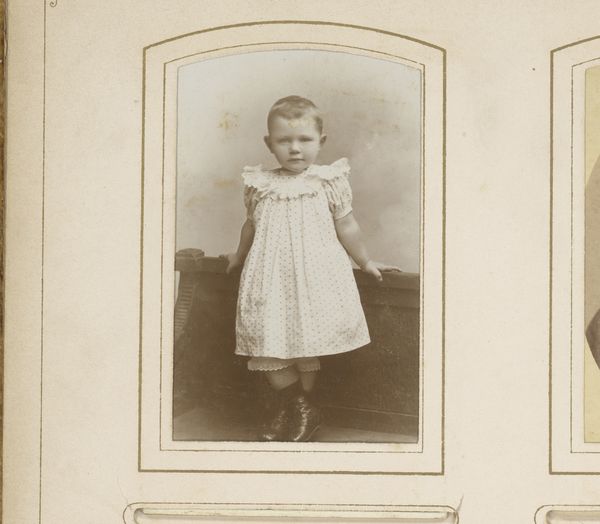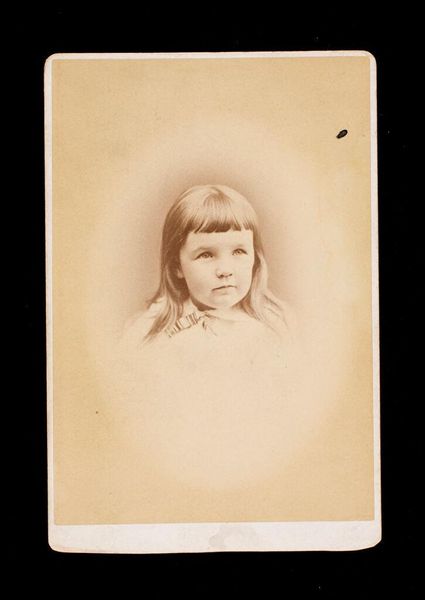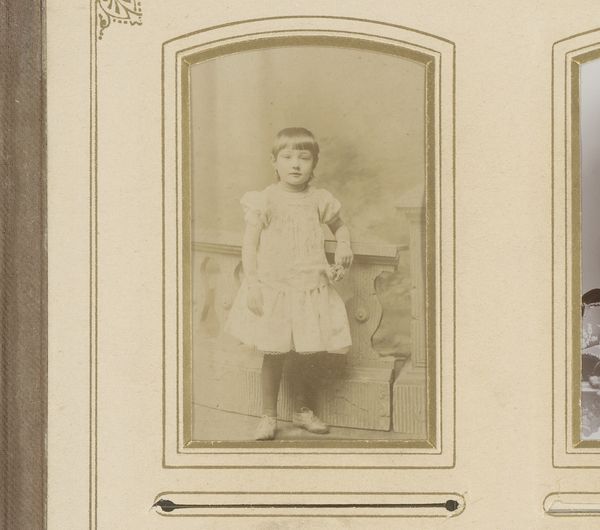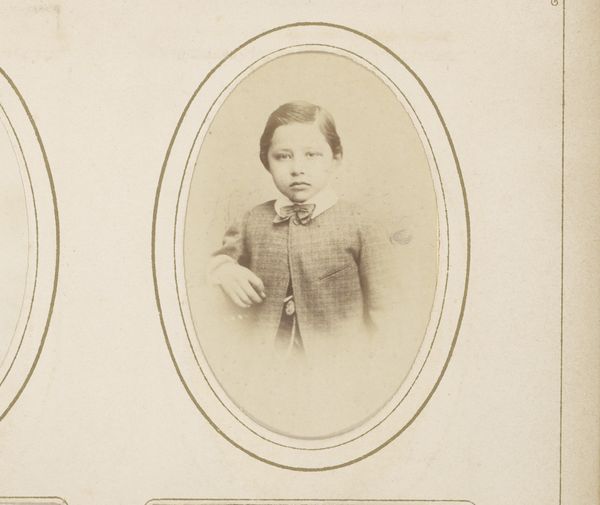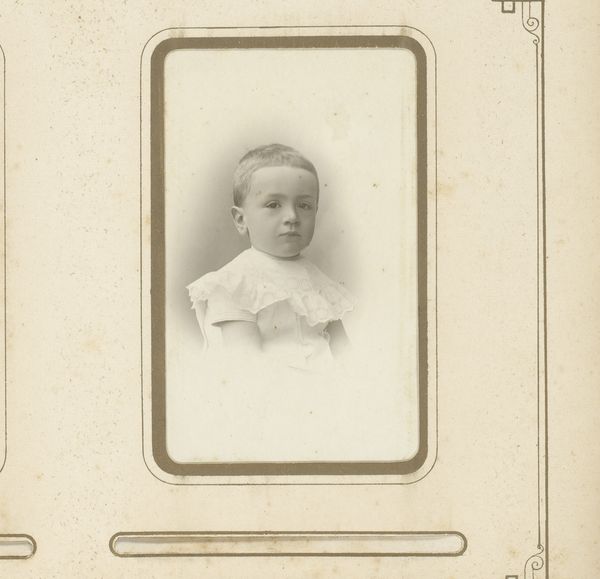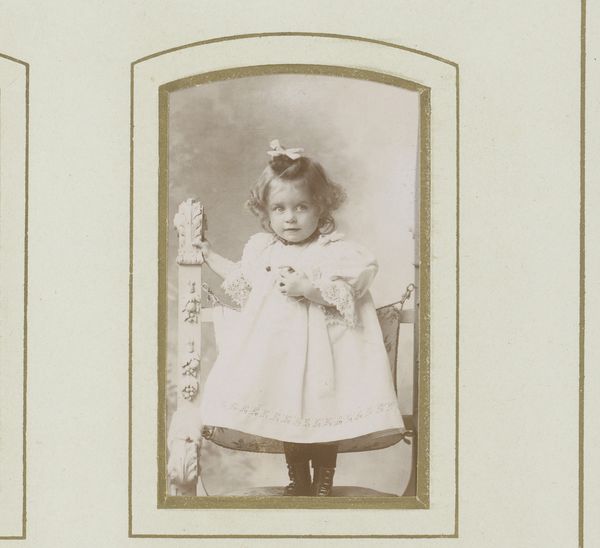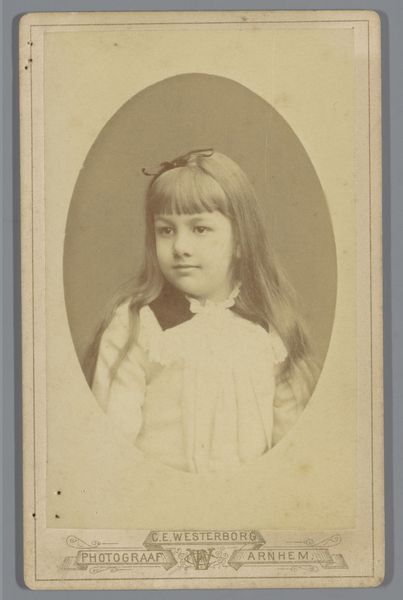
photography
#
portrait
#
photography
#
historical photography
#
genre-painting
Dimensions: height 82 mm, width 53 mm
Copyright: Rijks Museum: Open Domain
Curator: Here we have "Portret van een meisje," a photograph taken by Jacques Daniël Rijk, sometime between 1888 and 1894. It presents a captivating image from the past. Editor: Immediately, the sepia tones give this portrait such a melancholic, nostalgic air. The subtle gradations of light and shadow also create a lovely sense of depth within this flat medium. Curator: Indeed. These photographic portraits from the late 19th century offer us glimpses into a rigid social structure, don't they? The girl’s sailor outfit suggests a particular class and upbringing. What does it mean to present a child this way? Editor: It signifies both innocence and a cultivated identity, carefully framed and presented. Consider the formalism of the composition, however— the controlled light, the symmetrical balance— all direct the eye to her gaze, her interiority. Curator: Yet even that "interiority" is a construction. This formal portrait is a product of its time. Gender roles, class expectations – everything is carefully coded into the image. We can explore the power dynamics inherent in how children, especially girls, were depicted during this period. Editor: I acknowledge those dynamics, yet I am still drawn to the pure semiotics: her dark eyes amidst all this washed-out backdrop. A stark focal point for something much deeper beyond sociological interpretation. Curator: I agree, those eyes hold a certain depth and perhaps speak to individual resistance. But we must see it within the greater historical landscape to really find broader meanings that engage more than one narrative. Editor: I see your perspective, and that blend between intrinsic form and wider cultural narrative helps to unlock new viewpoints here. It allows us, really, to deepen our interpretations on how we engage with visual structure itself. Curator: Exactly. It highlights that artworks don't exist in a vacuum. Everything that influenced Rijk becomes intrinsically important too. Editor: So, that final balance allows us to find beauty with reason, as much as finding societal and ideological tensions? Wonderful.
Comments
No comments
Be the first to comment and join the conversation on the ultimate creative platform.
